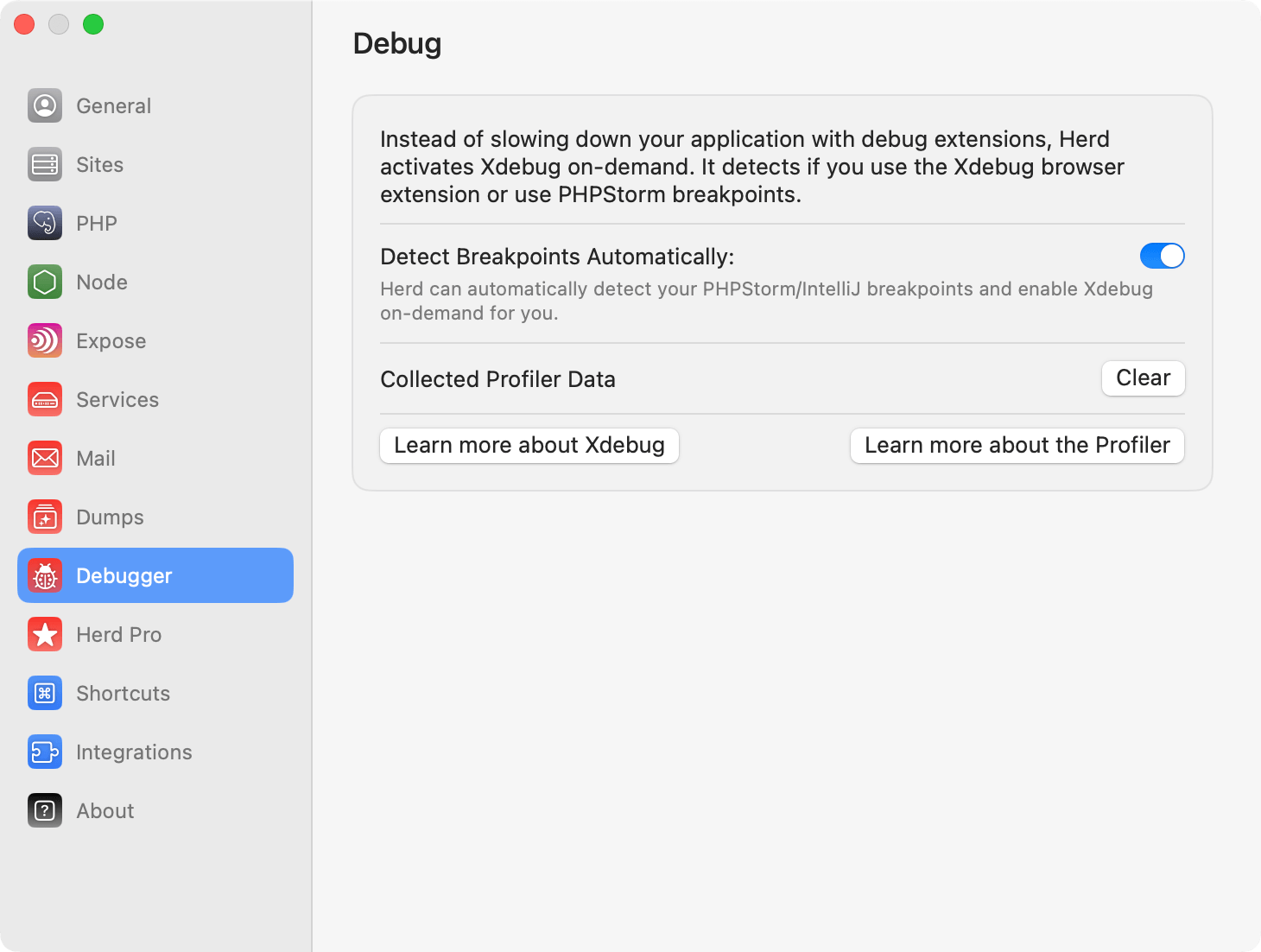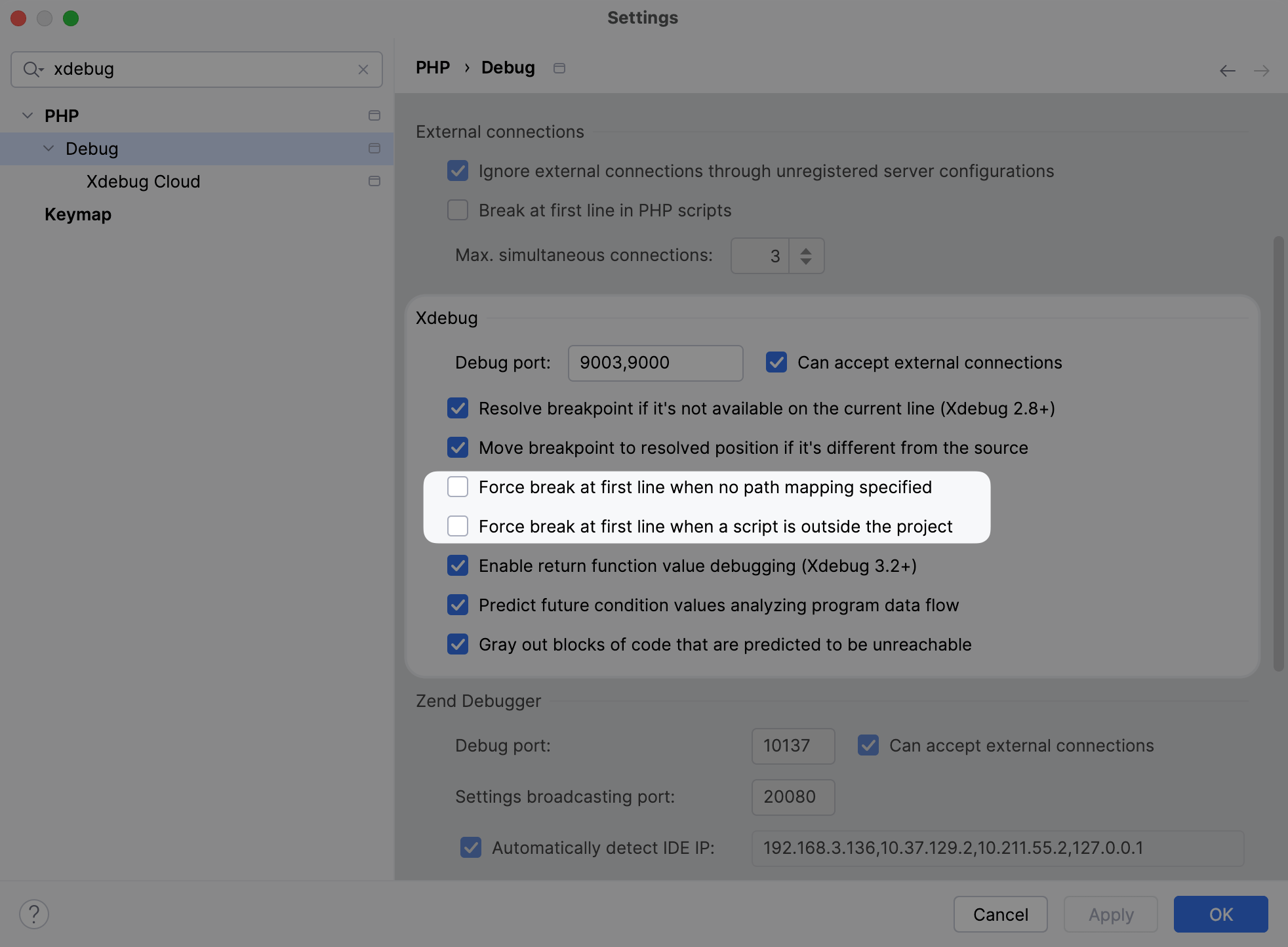Xdebug Detection
Automatically use Xdebug
Herd Pro is able to detect Xdebug headers in HTTP requests or breakpoints in PHPStorm and routes these requests to a PHP process with Xdebug automatically. This keeps your site super fast on all normal requests but provides advanced debugging capabilities with Xdebug when needed.
If Xdebug is too much for you and you prefer debugging via dumps, check out the Herd take on Dumps.
Setup with PhpStorm
Go to the debugging settings of Herd Pro and select the configuration to detect breakpoints within PhpStorm automatically.

When you set or remove a breakpoint in PhpStorm and save the file, this creates a temporary file within the .idea folder of your project. Herd parses these files to detect breakpoints.
Please make sure to listen for PHP Debug Connections in PhpStorm after setting the breakpoint so that Xdebug can connect to PhpStorm properly.
Configure PhpStorm to ignore the dump loader
Herd serves sites via a PHP script and if you’ve dumps enabled, it also uses a dump-loader.php file for custom bootstrapping of your application. If you want to debug with Xdebug, it makes sense to configure PHPStorm to ignore this dump loader. You can do that in the settings of PhpStorm by unchecking the boxes for:
- Force break at first line when no path mapping specified
- Force break at first line when a script is outside the project

If you do not use PHPStorm, you can use browser extensions for Xdebug to automatically load Xdebug.
Setup with browser extensions
Herd uses the headers of Xdebug browser extensions that you can install via the Chrome Web Store or Firefox Addons.
Once you enable the Xdebug feature in the browser extension, Herd serves the request via a PHP process with an enabled Xdebug extensions.
Using Xdebug on the command line
You can run CLI commands via herd debug .. instead of using php ... to use the php binary with Xdebug enabled. For example, if you are debugging an artisan command, you can run herd debug artisan your:command to trigger your breakpoint.
Code Coverage
Herd has a coverage command that allows you to run Xdebug’s coverage mode on your test suite:
Troubleshooting
If the detection does not work, please make sure to save the file with the breakpoint after setting or removing the breakpoint.

